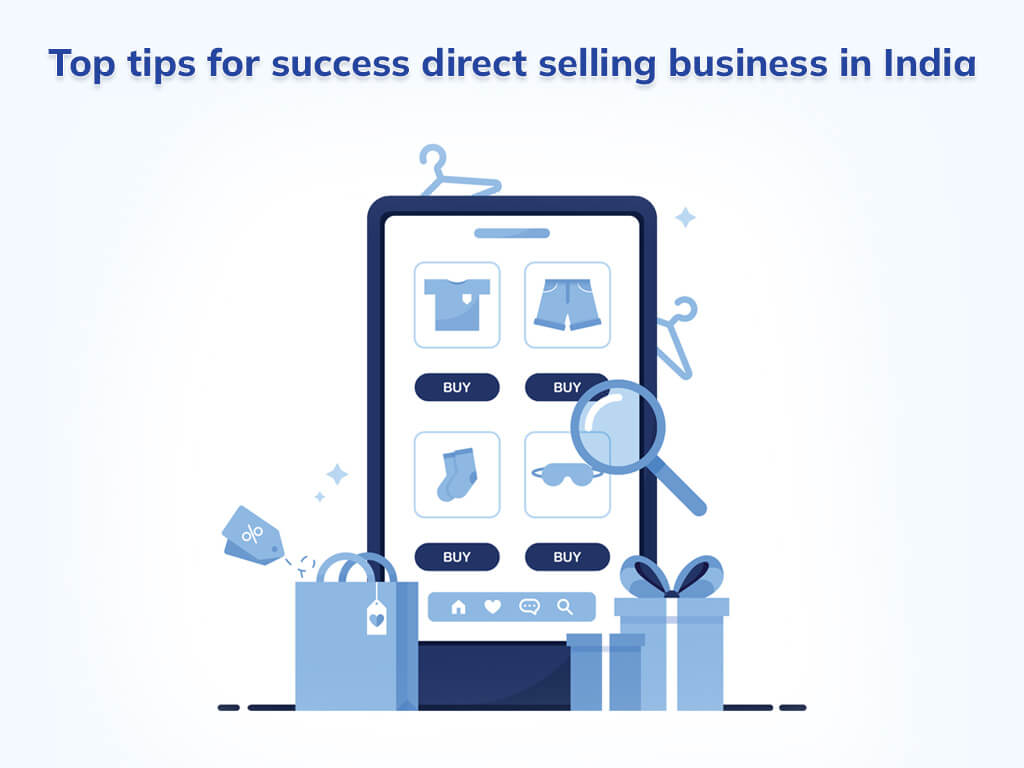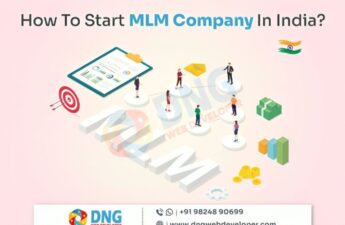Whatever your experience level is in Direct Sales, you’ll need a lot of advice, tricks, and cheats to help you get the most out of your business, stay motivated, and move up the ranks. As a DSR, you’ll have plenty of opportunities to grow professionally while also having fun. We’ve compiled a list of helpful hints and tricks to help you take control of your business, hire more people, and earn more money!
If a new company does not have a steady stream of income, it will fail (i.e. make sales). It’s critical in direct selling business to figure out how to draw and keep customers.
Direct selling business is the practise of selling products directly to customers in an environment other than a retail store (i.e. The sales process takes place at home, at work, or at another location other than a store.). In fact, many home-based businesses use direct selling to make contact with customers.

Direct sales companies bypass the distribution chain’s middlemen, such as regional distribution centres and wholesalers. It’s the direct sales company that gets their products instead of the manufacturer. As a distributor (sales representative) for a direct selling business, the manufacturer will provide you with the products to sell to the final customer.
What is direct selling business and who is involved?
The most popular categories for direct selling business are beauty products, skin care, essential oils, tupperware, and other care products. Direct sellers are common in the cosmetics industry.
Mary Kay is a direct selling business pioneer who sells cosmetics through a multi-level marketing business model, which is a marketing strategy for the sale of products or services in which the MLM Software company’s revenue comes from non-salaried employees. Participants earn a commission by selling the company’s products or services. Each seller is assessed as a freelancer or owner of a small business.
There are distributors, also known as sales representatives, make money by selling directly to members of their community, as well as receiving a commission on wholesale purchases made by those they recruit into the distribution network. In the beauty and personal care category, Avon is another well-known direct selling company. They also employ a multi-level marketing (MLM) strategy.
It’s easy to mix up direct selling and direct marketing, but they’re two completely different things. Individual salespeople reach out to customers directly through direct selling business, whereas companies market to customers directly through direct marketing.
direct selling business strategies
Being a direct sales superstar starts with having a friendly and professional attitude, but savvy business owners also use effective strategies to get their physical goods into the hands of customers.
The power of storytelling, leading with value, and building relationships is at the heart of direct sales. If you can show that you care about your products or services, it will resonate with your customers and have a positive impact on your bottom line.

Here are five direct selling strategies to help you succeed in the long run.
1. Give it away for free
Startups and small businesses rarely have the financial resources to invest in large marketing campaigns. It can be difficult to persuade customers to pay for products they haven’t even heard of if there is no brand recognition. Customers can try your product or service before they buy it, so free samples are an effective direct selling strategy.
Free samples can be used to: Introduce your product to new audiences who may not be familiar with your brand.
- Develop relationships with existing customers and build loyalty with them.
- Increase the knowledge of potential customers about the products you offer.
- To generate more sales of new products, establish repeat customers.
Free samples can have a significant impact on your revenue and business. It establishes a relationship of trust and connection between your company and its customers. If the trial period is a success, you will not only be able to convert these customers into long-term ones, but you will also benefit from word-of-mouth referrals.
Furthermore, providing free samples allows you to collect feedback and identify potential product web development issues.
2. Take advantage of email marketing

While door-to-door sales aren’t completely gone, businesses are increasingly turning to the internet for their direct-sales needs. Although email marketing has a number of advantages, including a wider reach and lower costs, you should be aware of the best practises when using it.
Avoid automated marketing programmes if you contact customers and potential customers via email. This can come across as phoney, as if you only care about making a sale and not about building a relationship with the customer or helping them with a problem they’re having.
Because we live in an age of constant emails and direct messages, it’s critical to keep your email pitches short and sweet. In the subject line, put your offer. Limit your first message to a few sentences in which you encourage the recipient to call you or reply to your email directly.
Rather than trying to sell someone on your first interaction, your goal is to start the process of building trust.
3. Use social media to connect with others.

Social media began as a fun way to reconnect with old friends, but in recent years, it has evolved into a powerful marketing and sales tool for businesses looking to engage in direct sales.
When it comes to getting a direct sales business off the ground, most people turn to their personal networks, such as friends and family. It’s a great way to start a business, but it’s not long-term.
You can reach a larger audience by using social media. Create business pages on social media, post high-quality photos and updates, collect customer feedback, and, most importantly, build a community.
Community aids in the development of trust and authority. Consumer engagement is a sign of a credible business operation, so your goal is to have consumers engage with your business. It works because we are more likely to trust companies that have a strong relationship with their customers.
Furthermore, social media allows companies to keep in touch with members of their sales teams. You can use social media as a direct selling business to send a quick reminder to your employees about an upcoming product promotion, which can help you increase sales. Even better, social media can be used to directly communicate with customers about new offers.
It’s critical to choose the right platform if you want to be successful with social media. Pinterest, for example, is an excellent platform for a product-based business to showcase its products in an artistic way. Instagram, which has one billion monthly active users, is another popular platform for showcasing products and connecting with customers.
Twitter and Facebook can help you build a central community, while Twitter can help you post spur-of-the-moment updates and advertisements that are likely to be read — and acted upon — quickly.
4. Use cross-promotion to save money.
Marketing costs can be overwhelming when you own a business. Rather than spending a lot of money on advertising, form strategic partnerships to help you save money on marketing. You can attract more customers with less effort if you use cross-promotional marketing effectively.
Bundled offerings, joint media appearances, events, podcasts, interviews, blog swaps, and partnerships with influencers in your space are all examples of cross-promotional strategies.
Because you can successfully expand through each other’s customer bases with strategic partnerships, cross-promotion can pay off exponentially. With cross-promotional marketing, traditional marketing methods such as networking, advertising, and even public relations are automatically taken care of. It turns out to be beneficial to you.
Because you can split the costs between partners, cross-promotion is also a great way to cut marketing costs. Don’t just build relationships with customers as part of your overall direct sales strategy. Make an effort to form relationships with other local sellers as well.
5. Provide extras
Businesses must find ways to attract and retain customers in order to succeed in direct sales.
Offering extra incentives is one of the most effective ways to build a loyal customer base. Discounts such as buy one, get one free or half-price offers, as well as value-added services such as free gift wrapping, are examples of extras.
Consider sponsorships, such as supporting a local youth sports team, or charitable contributions, such as volunteering at business-related events. These activities can help your company become more well-known.
Don’t just direct sell; connect to sell.
In the past, direct selling had a bad rep for being nothing more than a pyramid scheme with aggressive salespeople pounding the phones. Direct selling business, on the other hand, has experienced a renaissance in recent years, with a growing emphasis on providing consumers with valuable content, products, and services. You can work through those misrepresentations and build a trustworthy and successful business if you take the right steps.
Because it does not require selling from a physical location, the direct selling model is popular as a work-at-home business opportunity. You can set yourself apart by emphasising user experience and passion.
Make sure your online presence translates into a powerful storey by focusing on developing a good user experience, creating a community, providing exceptional customer service, nurturing strong partnerships, and developing a good user experience. Customers can relate to a storey. It allows the sales process to work for you rather than the other way around.
It’s critical to make every customer feel like a valued member of the company’s family, regardless of the direct sales strategy you use. It cultivates loyalty, establishes a connection, and establishes trust.



1 thought on “Top tips for success direct selling business in India”
Comments are closed.